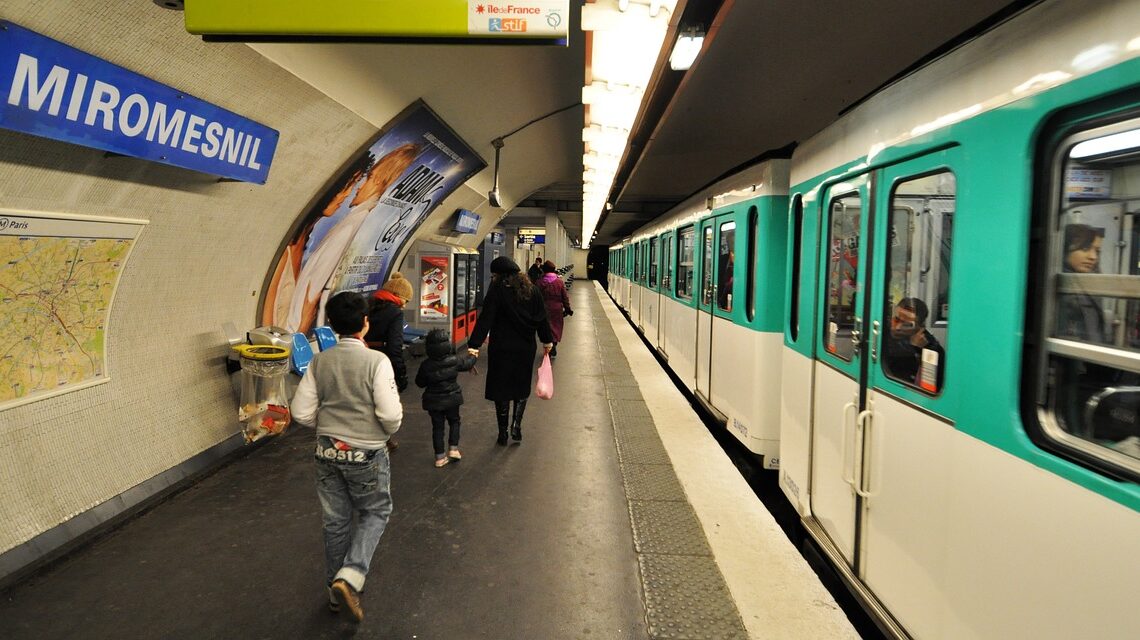
With a few days ago, an interactive map of metro and RER stations to avoid during the 2024 Olympics was unveiled by the Ministry of Transport, Parisians seem concerned. Restrictions, closed lines, and crowded stations, what should we expect?
Millions of spectators and visitors are expected in Paris and its region during the summer of 2024, from July 26 to August 11, 2024, for the Olympic Games and from August 28 to September 8, 2024, for the Paralympic Games. The streets of the capital will host road competitions, marathons, and cycling. The Seine will have the honor of opening the Games with the opening ceremony. Other districts of the capital such as La Chapelle, Concorde, or Trocadéro will host events, potentially making traffic difficult. The vast majority of restrictions and detours concern motorized vehicles (4 or 2 wheels).
Traffic and Security Perimeter
Some areas in Paris are requisitioned to host events of the 2024 Olympics. The installation of these competition sites begins in March 2024 and may cause some disruptions.
Here are the areas concerned:
- Concorde Zone: set up starting from March 2024
- Trocadéro, Eiffel, Champ-de-Mars Zone: set up starting from March 2024
- Grand Palais Zone, Alexandre III Bridge, Invalides: set up starting from mid-April 2024
- Opening Ceremony of the Olympic Games: set up on the lower quays starting from early June 2024. Set up on the bridges starting from early July 2024
For the smooth running of the events, perimeters will be set up. These will concern motorized vehicles with 4 or 2 wheels. The SILT (Internal Security and Counterterrorism) perimeter will only allow access to spectators with tickets and persons accredited by Paris 2024. This perimeter will be in place during the competition.
A red perimeter will be set up around the competition sites, the routes of the Olympic and Paralympic marathons, the Olympic and Paralympic cycling competitions, and along the Seine during the opening ceremony (and several days before). This perimeter prohibits motorized traffic. It will be active two and a half hours before the start of the first event. One hour after the end of the last event, it will be deactivated. Pedestrians and cyclists are allowed to circulate without restriction.
The blue perimeter, on the other hand, signifies regulated motorized traffic. It is in place every competition day, two and a half hours before the start of the first event, and deactivated one hour after the end of the last event. Pedestrians and cyclists can circulate without restriction.
Underground Hell during the 2024 Olympics
Parisians expected it, underground traffic in the capital is going to be a real obstacle course. The Ministry of Transport has released an interactive map showing which stations will be affected by very high traffic.
In total, there are 200 metro or tram stations that will experience very high traffic due to the competitions taking place nearby. Some stations will be inaccessible throughout the period, from July 26 to August 11. These include Champs-Élysées-Clemenceau, Concorde, Tuileries, Colette-Besson, Porte-d’Issy, and Porte-de-Versailles (tramway). Others may close for several days depending on the Olympic events organized. This is the case for Michel-Ange-Molitor, Porte-d’Issy, Boulogne – Jean-Jaurès, or Boulogne – Pont-de-Saint-Cloud.
At Gare du Nord, to access the platforms, expect to wait for at least 15 minutes (at least one hour per day), according to Le Parisien. This will be the most affected station. Accessibility issues will also be present at Châtelet-les Halles, la Fourche, la Motte-Piquet-Grenelle, or Porte-de-Saint-Ouen, Guy Môquet, Saint-Michel, Garibaldi, or Gare-de-l’Est.
Some lines will also experience greater traffic. Authorities estimate that lines 5, 6, 7, 8, 9, 10, 12, 13, and 14 on the metro, T3a and T3b on the tram, lines J, L, N, P, and U on the Transilien, and B, C, and D on the RER are expected to be the most saturated.
However, this is an average. Not all days will be affected by these platform access saturations. According to the average congestion calculations per day across the entire network, Tuesday, July 30, will be the busiest, ahead of August 8 and July 29, while the opening and closing days of the Games will be the least affected.